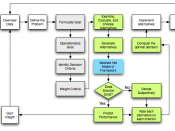Part 1: After reading Chapters 7, 8, and 9 of our text book, I then reviewed the Unit 2 Activity which consisted of five scenarios. This activity utilized different models, principles, and theories. In these Activities I found that scenario one represented the Allais's Paradox, scenario two represented the Certainty Effect, Activity three scenario represented the St. Petersburgh Paradox, scenario four represented the Prospect Theory, and scenario five represented the Intransitivity. In Activity one I came to the conclusion that this scenario is an example of Allais's Paradox, I based my findings on the fact that most people given the options made available in scenario one would choose option one which was the certain result, even though option two has an anticipated larger worth. (plous, 1993, p. 85). I would choose option one myself, the way I look at it getting a guaranteed $1,000,000 is better than taking any chance of getting $0, even though there is only a one percent chance of getting nothing with my luck I would be the one percent.
In Activity two, I came to the conclusion that this scenario is an example of the Certainty Effect; I based my findings on the fact that most people when given a choice would rather get rid of a loss, than reduce it. If given the opportunity to choose between two options one may help and the other would positively help we would probable prefer the sure thing. (Plous, 1993, p. 99) I fall into that 80 percent that would not purchase probabilistic insurance I would rather opt for insurance that definitely pays when there is a lost. In Activity three I came to the conclusion that this scenario is an example of St. Petersburgh Paradox, I based my findings on the fact...


